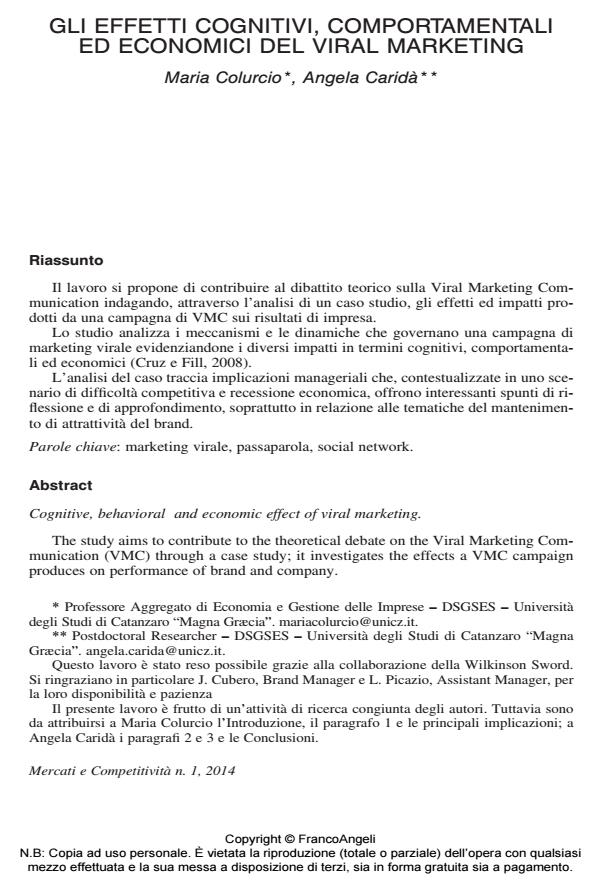Cognitive, behavioral and economic effect of viral marketing
Journal title MERCATI E COMPETITIVITÀ
Author/s Maria Colurcio, Angela Caridà
Publishing Year 2014 Issue 2014/1
Language Italian Pages 17 P. 85-101 File size 666 KB
DOI 10.3280/MC2014-001005
DOI is like a bar code for intellectual property: to have more infomation
click here
Below, you can see the article first page
If you want to buy this article in PDF format, you can do it, following the instructions to buy download credits

FrancoAngeli is member of Publishers International Linking Association, Inc (PILA), a not-for-profit association which run the CrossRef service enabling links to and from online scholarly content.
The study aims to contribute to the theoretical debate on the Viral Marketing Communication (VMC) through a case study; it investigates the effects a VMC campaign produces on performance of brand and company. Specifically, the study analyzes mechanisms and dynamics that rule a viral marketing campaign highlighting the different impacts: cognitive, behavioral and economic (Cruz and Fill, 2008). Case study allows to track managerial implications that provide interesting insights of the issue of the brand attractiveness, specifically in a context of economic recession and competitive difficulties.
Keywords: Viral marketing, e-word of mouth, social network
Maria Colurcio, Angela Caridà, Gli effetti cognitivi, comportamentali ed economici del viral marketing in "MERCATI E COMPETITIVITÀ" 1/2014, pp 85-101, DOI: 10.3280/MC2014-001005